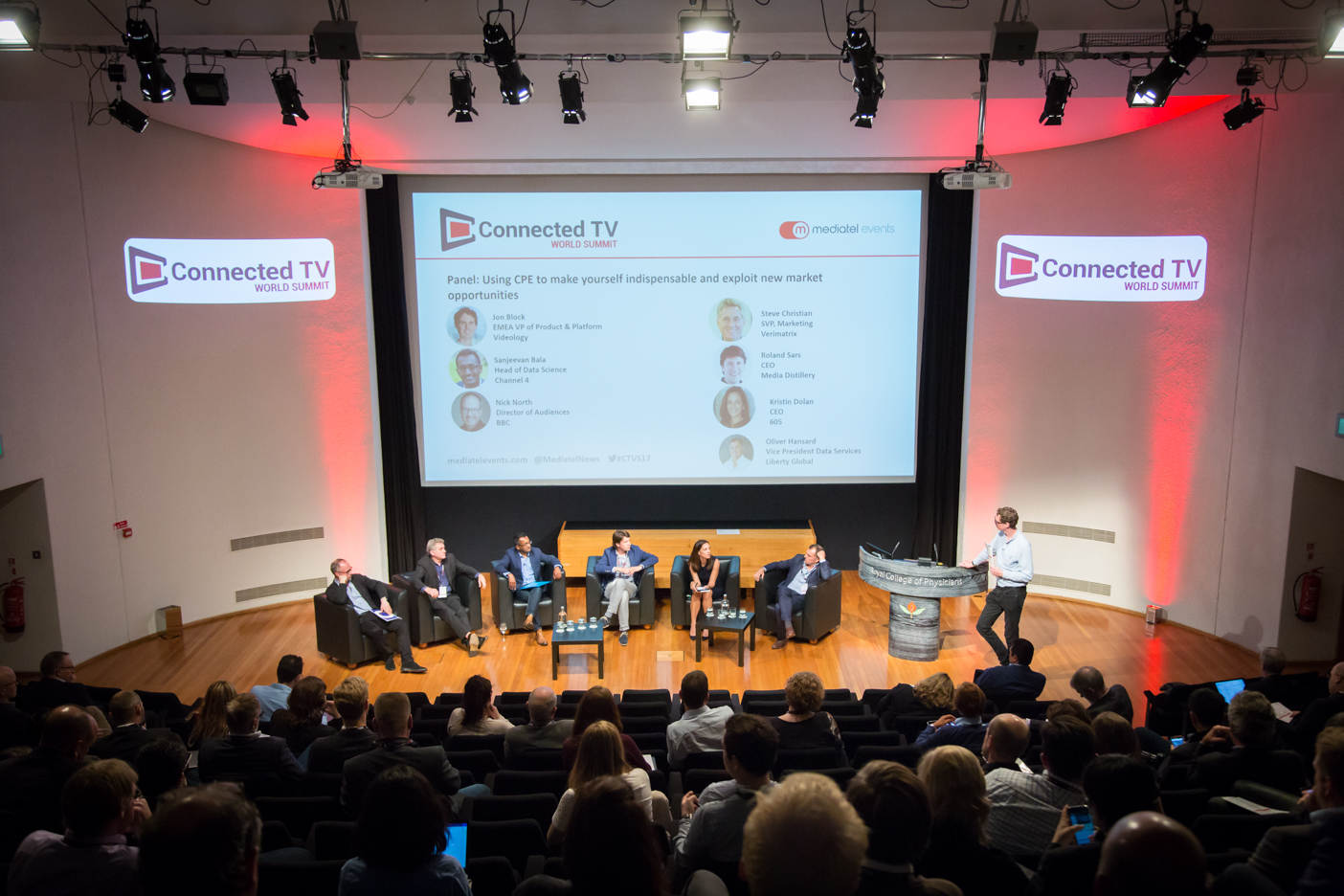How broadcasters can thrive in a hyper-disrupted marketplace

 The proliferation of streaming video, on-demand and multiscreen viewing, and the emergence of new, born-digital content creators and aggregators, means unprecedented disruption in TV. Broadcasters face multiple challenges, the first of which is to hold on to their viewers.
The proliferation of streaming video, on-demand and multiscreen viewing, and the emergence of new, born-digital content creators and aggregators, means unprecedented disruption in TV. Broadcasters face multiple challenges, the first of which is to hold on to their viewers.
It sounds easy if you say it quickly, but broadcasters must commission or acquire content that keeps us glued to our televisions and is the subject of casual conversations, and which wins awards. They must retain their pre-eminence in local content, even as global SVOD companies choose, or are forced by regulation, to invest more in ‘local’. They may need to monetise rights across more markets to help pay for increased investments in ‘originals’.
Broadcasters must also seek to dominate the digital sphere in the way they do broadcast – which may mean longer exclusive streaming windows. They need to make potentially life-changing decisions about distribution, like whether to feed global SVODs with content or instead ‘repatriate’ it to their own streaming services. They must decide whether to build their own SVOD services – perhaps in collaboration with other broadcasters.
Commercial broadcasters have unique challenges. As viewers migrate to digital, they must monetise them as effectively as they can in broadcast linear TV, but without heavy ad-loads that deter the less committed viewer. Targeted advertising is at least part of the answer.
They will also need addressable advertising on broadcast television, which means partnering with Pay TV operators who have AdSmart-style solutions, or developing an alternative – perhaps in collaboration with free-to-air platforms (possibly using the HbbTV standard). Anyone that wants a national addressable footprint will need a solution for free and pay homes.
Commercial broadcasters must also start to unify their broadcast and digital advertising operations so advertisers benefit from holistic planning, execution, measurement and reporting. There is no point keeping viewers away from Netflix and Amazon if your advertising budgets are then picked off by Google and Facebook.
If broadcasters meet all these challenges, what else do they need to worry about? If they start offering content behind their own pay wall then piracy, and the measures to counter it, should move up the agenda. And they need to pay attention to the fate of Pay TV operators, where much of the viewing happens today.
Any broadcaster that believes in aggregation must decide who they want as long-term partners. Online, Amazon and Apple are among those who might one day gather up content providers and give consumers a single place to view streamed programming. There is no guarantee that Pay TV will be the dominant aggregator, outside of free-to-air platforms, forever.
If broadcasters need Pay TV to thrive, they should pay attention to whether today’s operators can become the Aggregator Primus – the first and principal aggregator – in the 2020s. Is Pay TV the place where consumers will find most of the content they want? Can Pay TV operators be the trusted content discovery agent that knows what we love, and feeds it to us every hour of every day?
If Pay TV operators cannot do this, then what is the point of them, beyond the provision of exclusive content like sports, and bundled discounting?
(The jury is out on whether serious direct-to-consumer (D2C) efforts, from the likes of Disney {with Disney+} , will hurt Pay TV operators or global SVODs more, due to content repatriations. Pay TV operators need to keep hold of more ‘must-have’ content than SVOD rivals can, even if they cannot have it all. And subscription channels must carefully balance the long-term D2C opportunity against the Pay TV revenues they receive today. The channel owner decisions on whether to give or remove content will have an immediate bearing on how attractive Pay TV remains.)
The role of Aggregator Primus requires more than access to the best content, anyway. It is underpinned by a generational upgrade to the user experience, with popular apps onboarded, intelligent recommendation and content promotion, visually rich programme guides and catalogues, and voice-powered content discovery.
This upgraded UX needs to be available in as many homes as possible, which means ‘legacy’ set-top boxes as well as new ones should support new features. Small and medium Pay TV operators must be able to upgrade too, and quickly, regardless of engineering resources.
If broadcasters do make it through the current disruption, they can look ahead to the open road that leads, eventually, to all-streaming. Now is a good time, therefore, to consider what a post-broadcast world looks like, from both a technical and commercial viewpoint. How will people find content, and how will broadcasters find people?
One thing is certain: to understand the future of broadcasting you need to understand the future of everything – SVOD, D2C, Pay TV, pay, free, aggregation, content discovery, and the operations transformations that can boost agility and cut costs and so ensure profit. Connected TV World Summit takes a holistic view of television to help every stakeholder understand what comes next. This thought-leadership conference touches upon all the issues outlined above, and will be time well spent for any broadcast executive.
AIB Members receive a 20% discount to Connected TV World Summit by quoting AIB20
